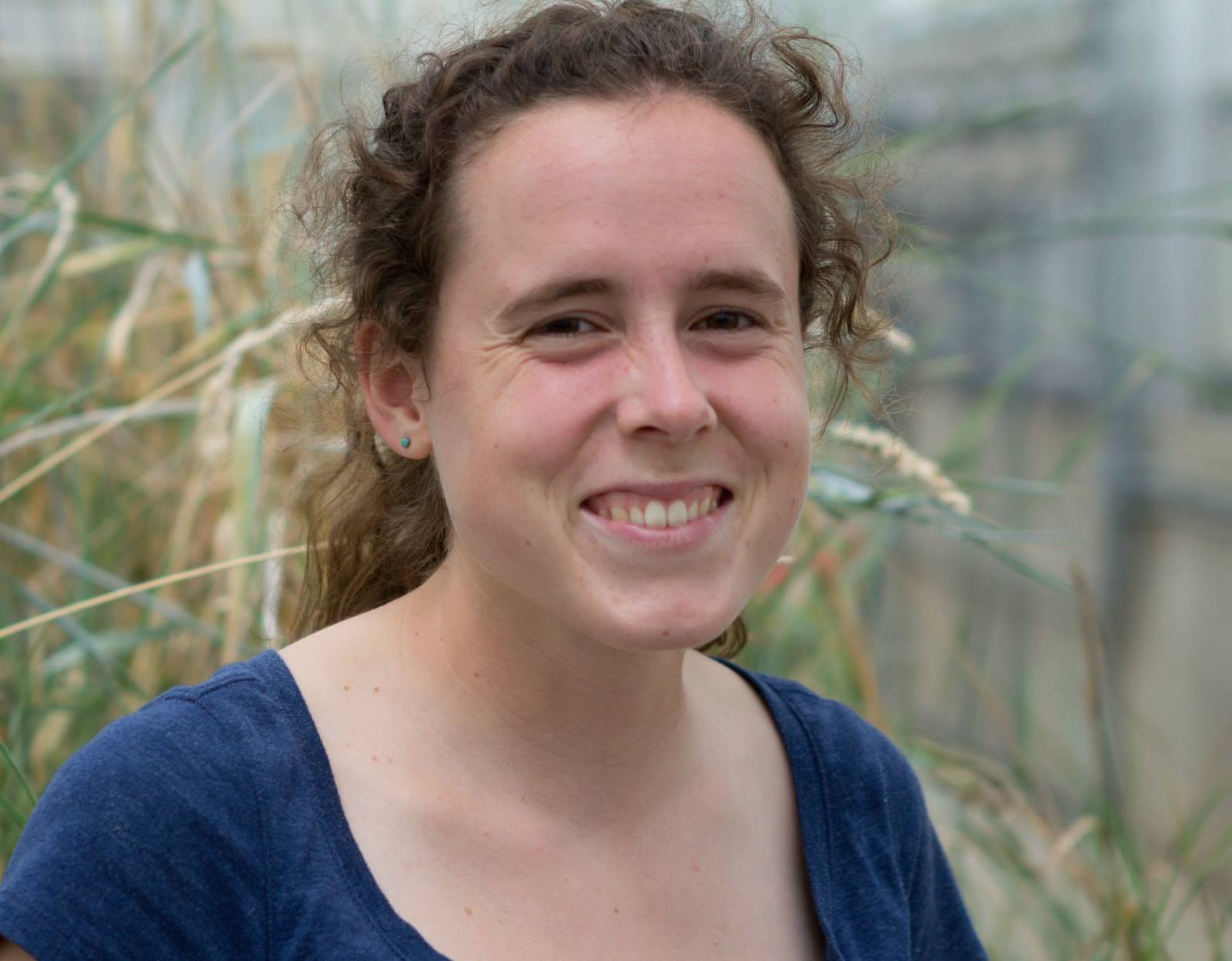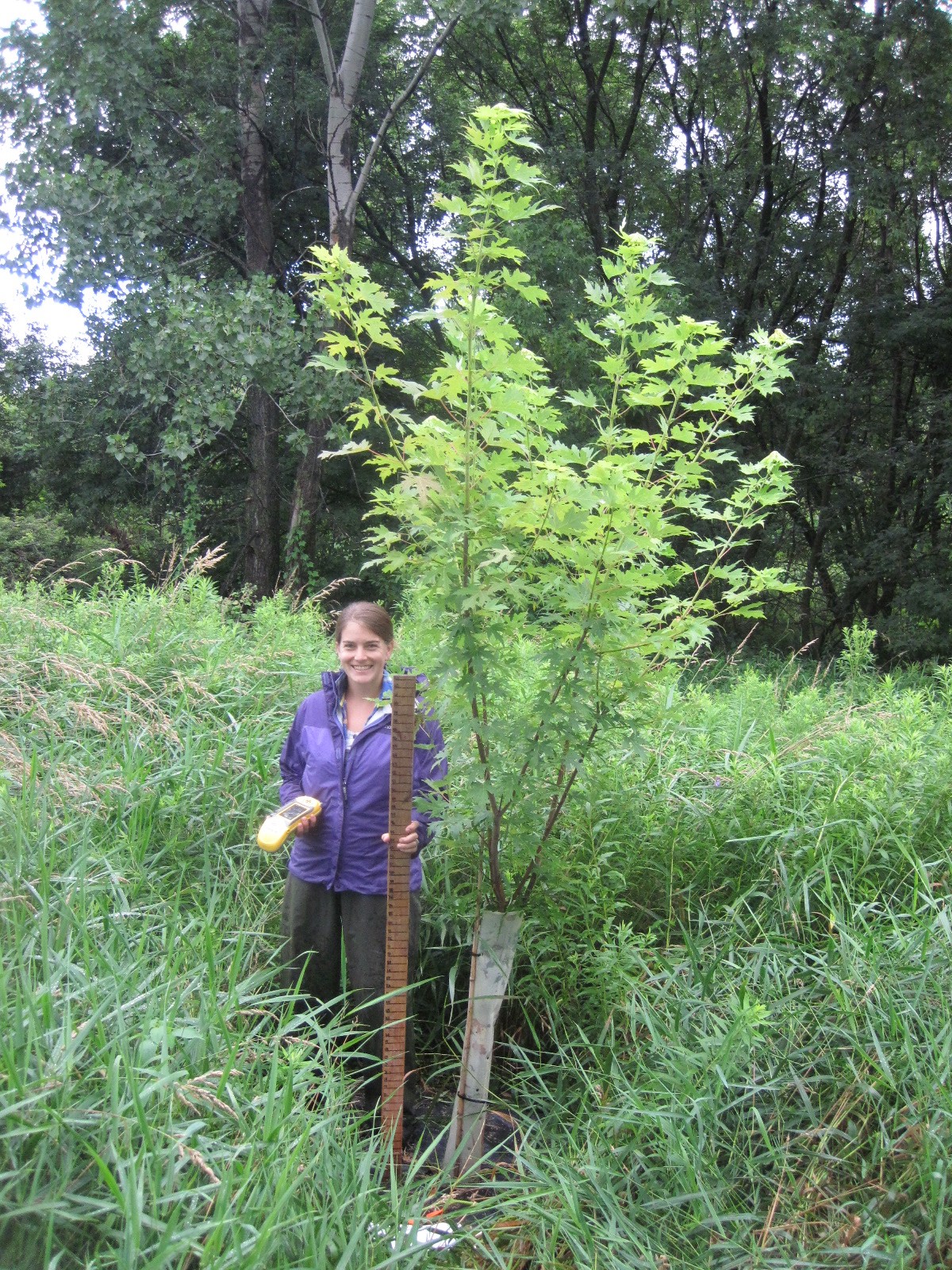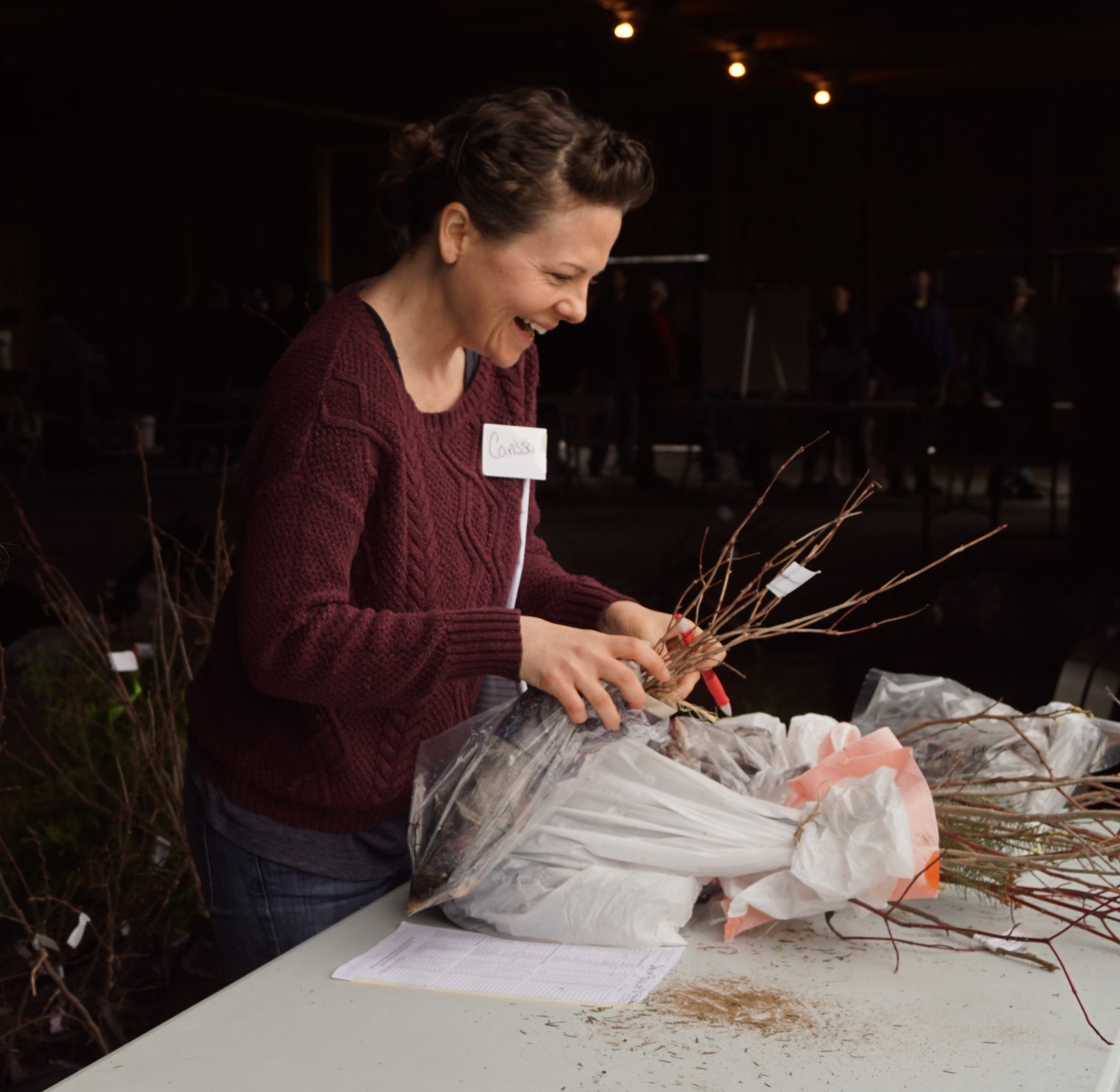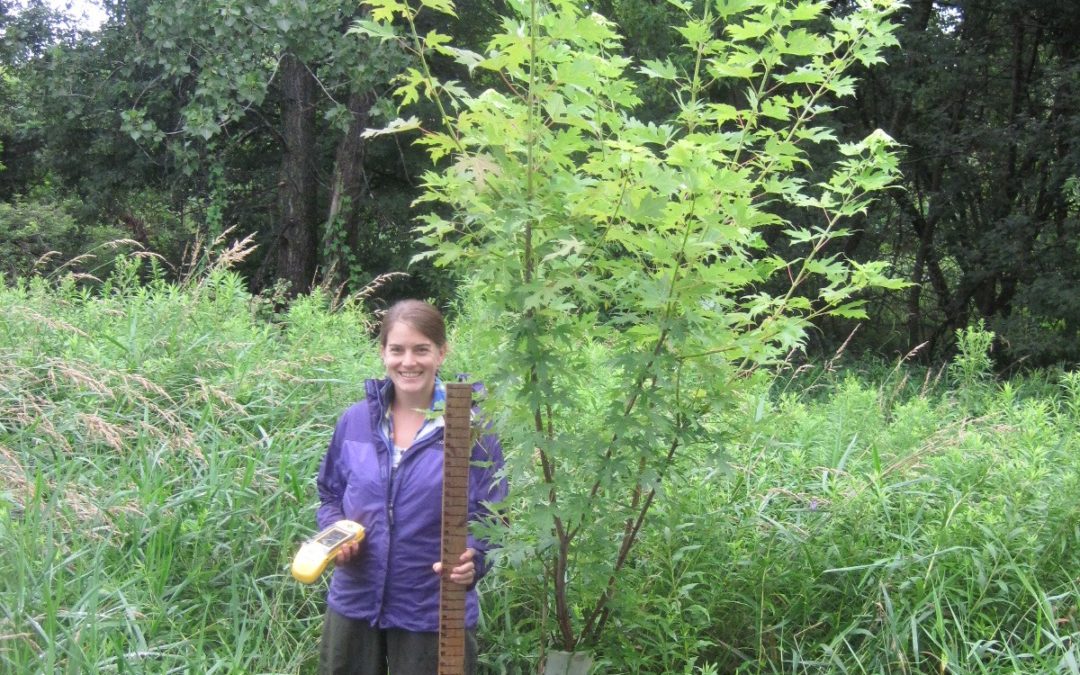
Here’s a question for you: How are the trees you purchased from our tree sale doing? Every year we distribute thousands of stems through our sale, but rarely do we hear of the lives these trees go on to live (or not live.)
There are two reasons we want to know how your trees from our Tree Sale are doing.Take Our Survey

Leah Szafranski from the USFWS’s Partners for Fish & Wildlife Program stands next to a 10’2″ maple five years after it was planted. (Photo: US Fish & Wildlife Service
One is if they’re not doing well, we want to help improve that for future years! We might be able to change things like which nurseries we buy from, how we handle them, or the care instructions we provide. We monitor our tree planting projects over the following years to see how they do. And across the state, groups that plant trees compare data and explore new approaches together. When the U.S. Partners for Fish and Wildlife Program checked up on 18 riparian buffer sites in Vermont that were planted in 2008, they found that unfortunately only 48% of planted trees had survived, on average. The good news is that those that didn’t die are growing vigorously, averaging 11’ 9” after ten years. Some of the most common reasons trees die in these projects are weed competition, drought, plantings getting swept away by a flood, deer and beaver browse, girdling by voles and mice, and improper planting. Since 2008 we think we take better precautions against these risks and have higher survivorship, so we and our partners are continuing to monitor new projects hoping for more encouraging results. And we’d like data to help your trees do better, too!
The other reason is if enough of our trees are surviving and thriving, we might be able to bring in corporate sponsors who would make certain species of trees free to you.

Volunteer Carissa Stein bundles an order of trees. What happens after you take them home?
You might ask, But Vermont is already 80% forested! Why would a corporation pay to plant more trees here? One answer is that the Intergovernmental Panel on Climate Change reports that, along with cutting new carbon emissions to zero, we need to plant 2.5 billion acres of trees to stabilize the climate. And a study published this year in the journal Science found that there is almost exactly that much acreage available for trees without displacing cropland. So, globally, every tree counts—we have to plant them where we can. Locally, trees enhance wildlife habitat, cool homes and offices, and filter nutrients that would otherwise end up in our lakes and rivers.
Companies are recognizing their unintended impacts on the environment and society, and they’re making an effort to counteract that by planting trees. But when a company claims, for example, “We planted 10,000 trees,” what does that mean? We think at minimum it should mean that 10,000 trees were planted that wouldn’t have been otherwise, and that those trees survived and flourished.
So, are your trees surviving and flourishing? With some being free, will you plant more than you do otherwise? Please tell us in our Tree Sale Survivorship Survey, available online here. As thanks, we’ll give you $2 off this year’s order! There’s a lot more to think about in terms of partnering with businesses in this way and improving tree survivorship, and without your input we can’t even begin. Thank you!
-Jeannie Bartlett, Franklin County Conservation District Manager
February, 2020







